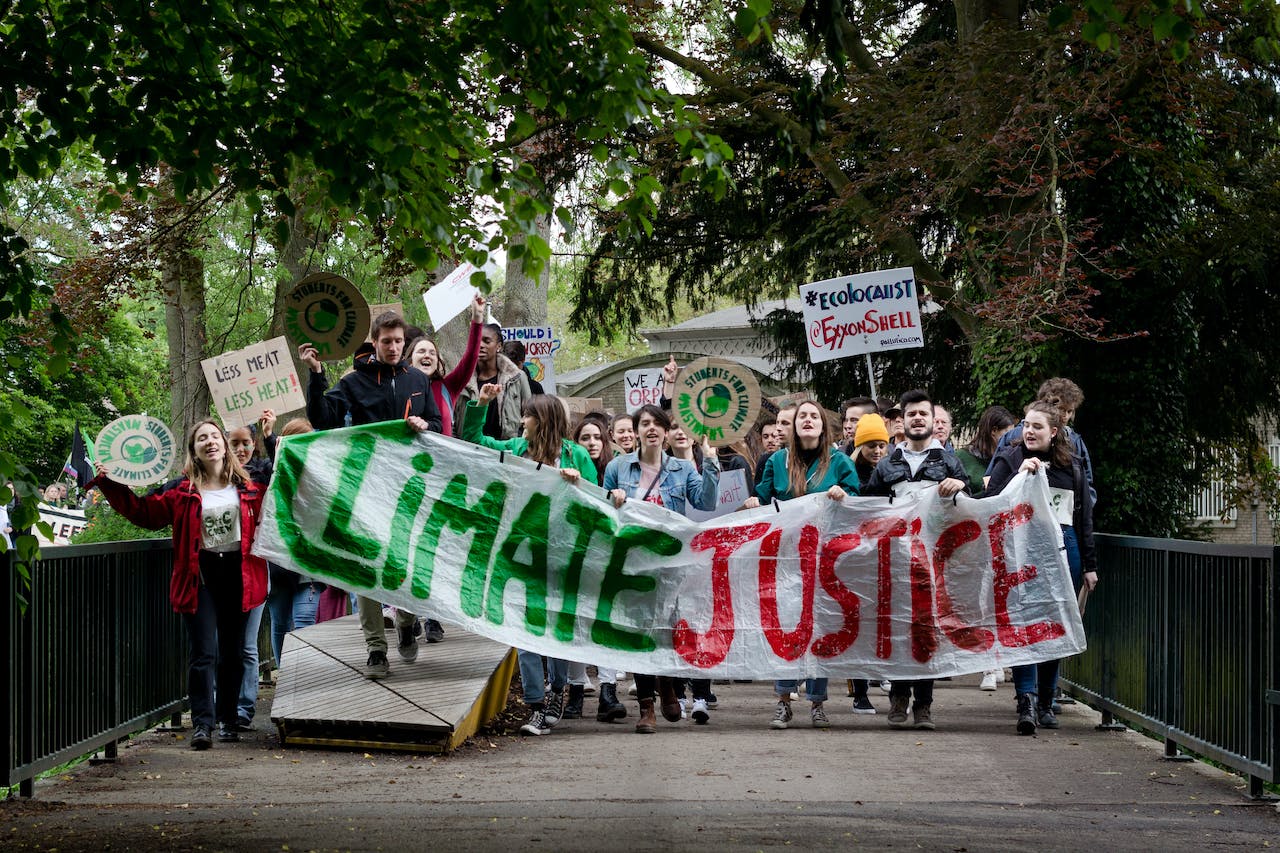
Climate Activism and its War on Art
Climate activism has reached a boiling point. This week, two protestors threw soup at the Mona Lisa to protest the government’s slow shift to sustainable farming. The act forced the Louvre to close for an hour and a half to clean the glass protecting the iconic painting.
This was just one act of vandalism in a string of protests targeting famous paintings. The first attack that made waves in the public sphere was when two protestors from the Just Stop Oil Movement threw cans of soup at Vincent Van Gogh’s Sunflowers.
Another group threw black oily paint at Tod und Leben by Gustav Klimt. Two more people were arrested after they tried to glue themselves to Edvard Munch’s The Scream. These protests by climate activist groups have become a common way of expressing anger at governments and corporations.
But are they an effective way of protesting governments and corporations regarding their inaction toward climate change? Will they push officials to enact policies that mitigate the harms we are currently experiencing? Perhaps a more important questions is: “What is worth more, art or life?”
The Conflict of Consensus

As the attacks on art continue to escalate, opinions on the matter are divided. The Atlantic ran an article after the first wave of climate change-related vandalism with the headline “The Climate Art Vandals Are Embarrassing.” In the aftermath, museum curators around the world said that these paintings are too fragile and irreplaceable to be the target of such protests.
In a profile by the New York Times, other curators warned these acts might accidentally damage the works of art if it continued. Musée d’Orsay General Administrator Pierre Emmanuel Lecerf said that there was no such thing as zero risk despite the museum’s level of security.
Many climate change activists, however, see this as a zero-sum game: there’s not enough worry about the climate emergency currently happening.
Last year’s COP28 summit in the United Arab Emirates still refused to call for the phasing out of fossil fuels. With the tendency of inaction from governments and corporations, it is easy to see why activists believe there’s not enough urgency in facing the climate emergency.
Thus, the escalating protests push governments to act. Even in that context, is the defacement of priceless art like the Mona Lisa a valid form of protest?
The Practice of Defacement as Protest

Defacement of art and property as a form of protest isn’t new. The big argument revolves not so much on properties or artwork themselves, but what they represent.
When towns and cities in the United States refused to take down Confederate statues protestors defaced or toppled the statues themselves. Many regard these as monuments to white supremacy and racism. And for people of color, the act of keeping them is tantamount to an act of terror.
In many urban centers and marginalized communities, from New York to Gaza, vandalism is a common, non-violent act of rebellion. Whether it’s the anarchy symbol scrawled on a wall or a graffiti portrait of George Floyd, street art remains a way of protesting against oppression.
So what do priceless art pieces like the Mona Lisa or The Scream have to do with climate change? The simple answer is corporate donations.
Institutions like the British Museum and other museums across the world rely on corporate dollars to keep them running. Fossil fuel companies like Shell and BP sponsored exhibits on climate change in the past, often to accusations of greenwashing. The United Kingdom also justified oil company involvement in museums.
This is happening while corporations are still getting away with environmentally-harmful practices. Last year, courts ordered Shell to pay a Nigerian community $111 million for an oil spill that happened in the 1970s. That same year, they made close to $6 billion in profits. The fine accounts for less than 2% of their earnings for something that happened half a decade ago.
For climate activists, this make artworks fair game because they’re funded by the very same corporations that contribute to climate change.
Is It Effective Climate Activism?

An interesting paper on the subject by philosopher Macalester Bell suggests that it is. Bell argues that simple removal isn’t enough, and that defacement brings a certain dishonor to what the art or property represents.
He argued for the defacement and eventual removal of Confederate statues. But, the logic can also work in how activists treat works of art like the Mona Lisa. You can see the practice as an act against corporate greenwashing.
Corporations use the act of funding as a way of shielding themselves from critique. But by ruining these paintings with food, it shows the practice doesn’t work. Their dishonorable practices remain even with their attempts to hide through charity and art museums.
Climate activism will likely continue to escalate as we start to feel the worsening effects of climate change. We can only hope that the artwork’s vandalism will prompt action to ensure the Earth’s protection in the long term.
Read more:


